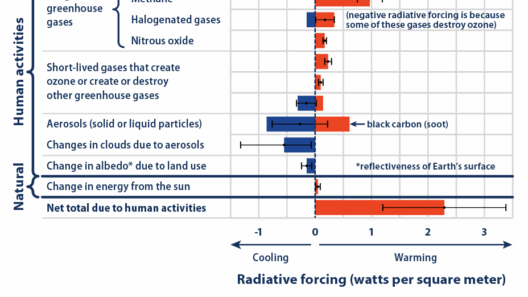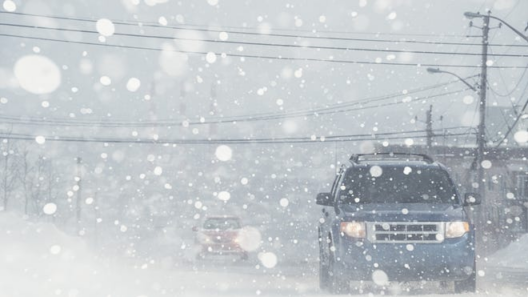In exploring the tapestry of human experience, literature often serves as a prophetic lens, enabling us to envisage futures sculpted by current realities. “The Marrow Thieves,” a novel that grapples with the dire consequences of climate change, thrusts readers into a dystopian world where global warming has wreaked havoc and humanity’s very essence is at stake. What if the future we fear is not a figment of our imagination but a palpable reality awaiting the unheeded ramifications of our present actions?
Set in a post-apocalyptic Canada, “The Marrow Thieves” paints a picture of a society where the climate crisis has escalated to such an extent that the ability to dream has been eradicated. The Earth, once teeming with life, now bears the scars of relentless exploitation and disregard for the environment. In this bleak landscape, the indigenous populations, connected deeply to the land and its cycles, become the targets of a twisted hunt. Their bone marrow, which contains the secret to reclaiming the dreams lost by the rest of humanity, is deemed a commodity. The novel magnifies an unsettling irony; in the quest to restore dreams, society disregards the very lives of those who possess the wisdom to live harmoniously with nature.
As the narrative unfolds, the reader is introduced to Frenchie and his cohort, a group of resilient young individuals navigating the perilous terrain of their new world. Their journey evokes themes of survival, identity, and the reclamation of culture. Here lies a challenge to society: how do we preserve the wisdom of those who have maintained a sustainable existence in the face of annihilation? This question echoes in the present; as societies globalize and industrialize, the voices of indigenous peoples often fade into the background, despite their invaluable knowledge about environmental preservation.
In “The Marrow Thieves,” the repercussions of climate change are not merely abstract concepts but manifest in the quotidian struggles of its characters. Their interactions with the environment reflect a stark contrast to the destructive practices that have led to their current plight. The novel encapsulates this duality effectively: those who are deeply attuned to nature are portrayed as the last hope. They embody resilience, a quality essential for survival amidst ecological collapse, while also competing against an overarching system that commodifies and dispossesses.
The destruction wrought by climate change in the novel is not confined to physical landscapes; it seeps into the cultural fabric of humanity. The loss of dreams symbolizes a broader ecological and existential crisis. What does it mean to lose the ability to dream? It signifies a bleak future, where imagination and hope are extinguished—conditions that threaten the very survival of species, cultures, and communities. The implications are grave; they stir reflection on our approaches to environmental stewardship and the intrinsic value of biodiversity.
One might ponder the potential ramifications of this narrative on our current societal trajectory. Can we avert such an ominous future? This question is both playful and challenging, as it forces introspection about our collective responsibilities. For individuals who find themselves grappling with the enormity of climate change, striking a balance between urgency and hope becomes paramount. Society often finds solace in the notion that technology and innovation will save us; however, “The Marrow Thieves” serves as a cautionary tale that highlights the imperative of integrating traditional ecological knowledge into contemporary practices.
The characters in the novel embark on a journey not only of physical survival but of reclaiming their identities and dreams. They learn to navigate a landscape that is both familiar and foreign—a space that has been irrevocably altered by human hands. Herein lies another core aspect of the narrative: the reconciliation with history, specifically, the historical injustices faced by indigenous peoples. True sustainability can only be achieved through the recognition and inclusion of voices that have been silenced for centuries, often drowned out by the cacophony of progress and development.
Ultimately, “The Marrow Thieves” beckons readers to confront uncomfortable truths about our relationship with the environment. The ramifications of neglecting this relationship are acutely portrayed through its characters’ struggles and triumphs. As we engage with this text, it becomes evident that the journey toward a sustainable future requires not just innovation, but a profound transformation in worldview—a shift towards understanding the interconnectedness of all life forms. The balance of our ecosystem, the health of our planet, and the essence of our dreams are intricately linked.
Therefore, as we ponder the world depicted in “The Marrow Thieves,” we must also consider actionable steps within our realms of influence. If we find ourselves ensnared in a web of complacency, how do we act to cultivate a future unmarred by despair? We stand at a precipice; the decisions we make today will reverberate through generations. Empowering marginalized voices, advocating for sustainable practices, and fostering a respectful relationship with nature are essential components of this transformation. The call to action is clear: we must embrace this moment in history, lest we allow fiction to become our reality.
“The Marrow Thieves” serves not only as a compelling story but as a clarion call for urgency in the face of climate change. By dissecting the novel’s themes, we gain insights into our own cultural narratives and the dire necessity of protecting the environment. The question posed at the outset lingers—can we amend our ways before it is too late? This enigmatic challenge invites us to reflect not just on our individual actions, but on the collective responsibility we share in nurturing our planet for future generations.








